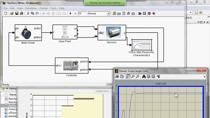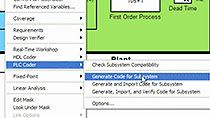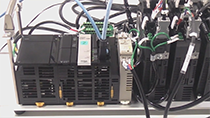Model-Based Design of Production Machines – Part 3: Automatic Code Generation for PLCs
From the series: Model-Based Design of Production Machines
Overview
From food packaging to metal cutting and injection molding, leading industrial equipment and machinery OEMs use Model-Based Design with MATLAB® and Simulink® to address the increasing complexity of their products.
In the 3rd part of this webinar series, you will learn how to deploy your algorithm on a PLC using automatic code generation.
Highlights
- Automatic code generation targeting a Siemens PLC
- Integration of the generated code into the TIA Portal
About the Presenter
Conrado Ramirez Garcia is an application engineer at MathWorks. He specialized in supporting customers of different areas including machine builders, industrial robotics, wind turbines, automation, and energy production. His focus area includes the code generation for embedded devices and industrial controllers.
Before joining MathWorks, he worked for 5 years at GE Aviation and GE Power as a Controls Engineer. Conrado holds a master’s degree on Power Engineering from the Technische Universität München, where he specialized on Control Systems, Energy Systems and Power Electronics.
Recorded: 10 Oct 2023





